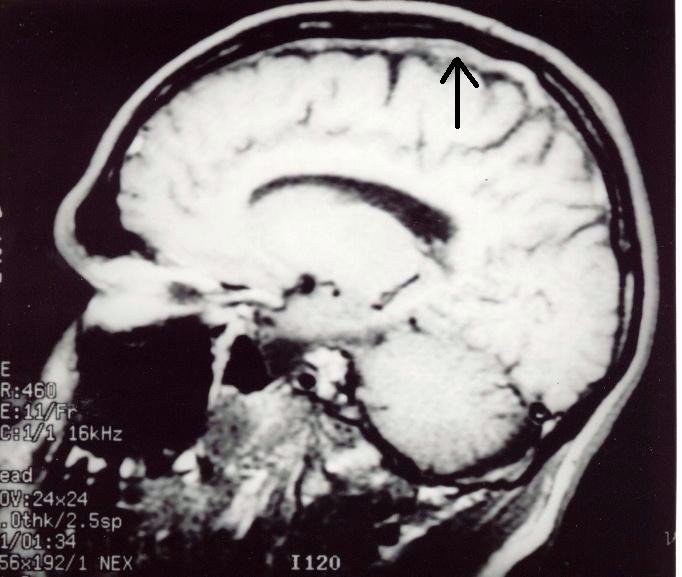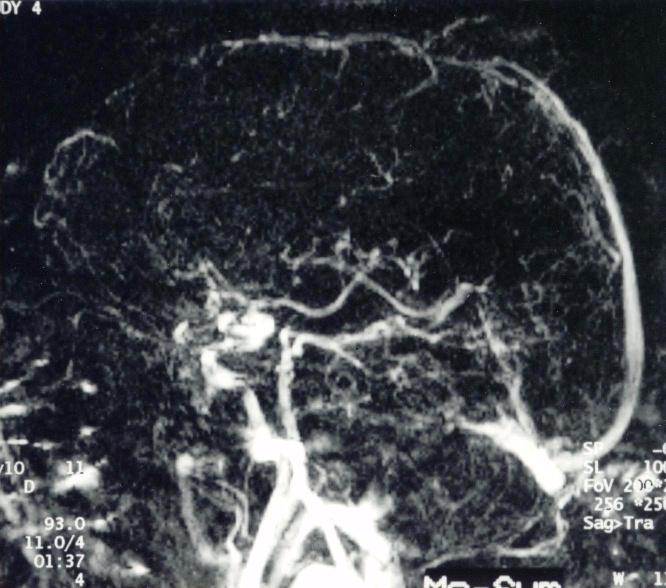
Figure 1 |

Figure 2 |
| Neuro-ophthalmology: Case eighteen |

Figure 1 |

Figure 2 |
This 58 year-old man complained of a severe headache 12 hours after taking part in the London marathon. He attended the general casualty but no cause was found. He was discharged with a diagnosis of possible migraine. However, the pain persisted and he re-attended the casualty 2 days later. He was found to have bilateral optic disc swellings and an urgent MRI scan was requested. Full blood count revealed high platelet count (thrombocythemia) but otherwise all the other tests were normal.
a. What does the scans show?
The MRI scan is T2 weighted and shows thrombosis of the superior sagittal sinus. Normally the sinus is not visible on the T2-weighted MRI due to the fast flow of the blood. In thrombosis, the sagittal sinus appears white (see arrow).b. With which disease may this condition be confused with ?Figure 2 is the MR venogram of the same patient showing obstruction of the superior sagittal sinus. The occlusion is not complete as the outline of the sinus is still visible.
Benign intracranial hypertension.Superior sagittal sinus thrombosis may be mistaken for benign intracranial hypertension especially in females unless one specifically look for it.
Unlike benign intracranial hypertension, sagittal venous thrombosis is associated with severe headache, seizures, somnolence, disturbances of consciousness and focal neurologic signs such as hemiparesis.
c. What are the predisposing factors?In this patient, the combination of thrombocythemia and dehydration from marathon running are responsible. Other factors include:Primary haematological disorders
Systemic conditions
- antiphospholipid syndrome
- thrombophilia (protein S deficiency, resistance to activated protein C and antithrombin III deficiency)
- thrombocythemia
- polycythemia
Local infections (but these tend to affect the jugular and transverse sinuses)
- Behcet's disease
- SLE
- cancer
- nephrotic syndrome
- sarcoidosis
Trauma
- mastoiditis
- cellulitis
Dural arteriovenous fistula
Click here for the questions Click here for the main page Click here for MRCOphth tutorials